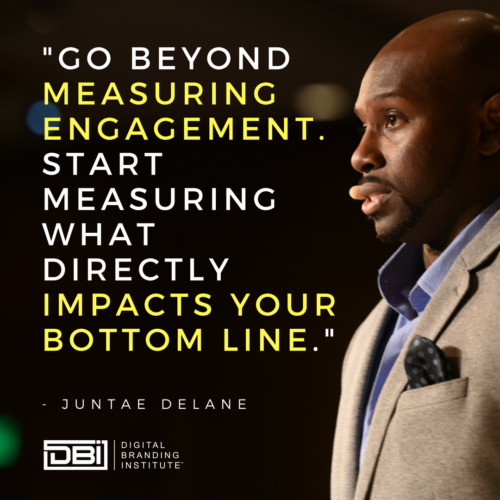The quickest way to achieve content marketing ROI is by owning your media. Once you’ve built an audience, your ROI naturally increases since you don’t have to pay to rent media.
Content marketing ROI starts with a detailed understanding of content cost and how that content contributes to revenue generation. Like all marketing tactics, you must measure your content marketing efforts to see if they’re working.
Here are 3 quick tips to achieve content marketing ROI.
1. Set Your Strategy
The most important advice I can give anyone looking to establish a content marketing campaign is to start with a comprehensive strategy. Content marketing is an important piece of the marketing puzzle. Many marketers understand the importance of creating content to generate awareness and nurture prospects.
Unfortunately, this often leads to developing content for content’s sake. Some organizations are creating content just to keep the attention of current and potential customers. Their strategy is to simply create more content.

Don’t get stuck in hampster wheel of continuous content creation without a strategy. This will kill your ROI.
Start by creating content your customer wants and needs.
How often do you survey your audience? What does your online listening program tell you about what resonates with customers?
Find out the biggest problem facing your consumers and create content that solves their problems. Pretty simple, right?
Pretty simple, right?
Once you establish your strategy, set benchmarks for your content marketing efforts.
2. Set Your Metrics
ROI lead generation for B2B is simple to calculate as a business’s digital footprint is typically larger than the average consumer’s.
For B2C marketers, it’s more challenging to link ROI to content marketing. So, when setting your content marketing metrics, be sure your consumer data matches with data derived from your content marketing efforts. Specifically, try to link your consumers’ social data with your pre-existing consumer data (i.e. name, email, etc.).

Management Metrics
The following metrics should be closely monitored by the campaign manager:
- Number of Contact Us Submissions
- Social Engagements
- Link Building and SEO
- Website Stats
- Email Conversions
- Lead Quality
- Retention Period
- Sales Cycle
Executive Metrics
Marketing executives would be interested in the following metrics:
- How much content marketing is saving your organization versus your SEM (Search Engine Marketing) efforts.
- How much you are saving by posting content on your owned media vs social channels (meaning, your site is generating X impressions versus X impressions gained from a Facebook ad).
- How many new customers are generated through content marketing versus purchasing a list of leads?
- The savings with regard to focus groups and qualitative research studies.
Remember, you can’t measure everything. If your content is generating more traffic, leads, and revenue, then all the other metrics are secondary.
3. Set Your Budget
Creating a significant ROI depends on your understanding of all costs involved with creating content. There is no way around it. Content marketing is resource intensive. Whether it is monetary or person hours, you must account for these costs when determining ROI.
Here’s an example of content production costs
- Blog posts: 2-4 person hours
- Infographics: $25-$5,000
- Videos: $5,000-$150,000
- White papers: 5-20 person days
- SlideShares/Presentations: 1-10 person days
Don’t let this example scare you. Have no budget? No worries. Content curation can be a very effective way to meet your marketing objectives. Although the curated content is not yours, it can help establish your brand as a viable source of information. If you are consistent with posting curated content, you can stay on top of your consumers’ minds. All this at virtually no cost to you.
Conclusion
Before you begin your content marketing campaign, start with establishing a strategy to define your content, metrics to measure your content, and a budget to fuel your campaigns (both for production and promotion). If done correctly, you can show a significant content marketing ROI which can add creditability to you and your marketing campaign.
Have you seen an ROI from content that you developed? Tell us your story in the comments section below…











